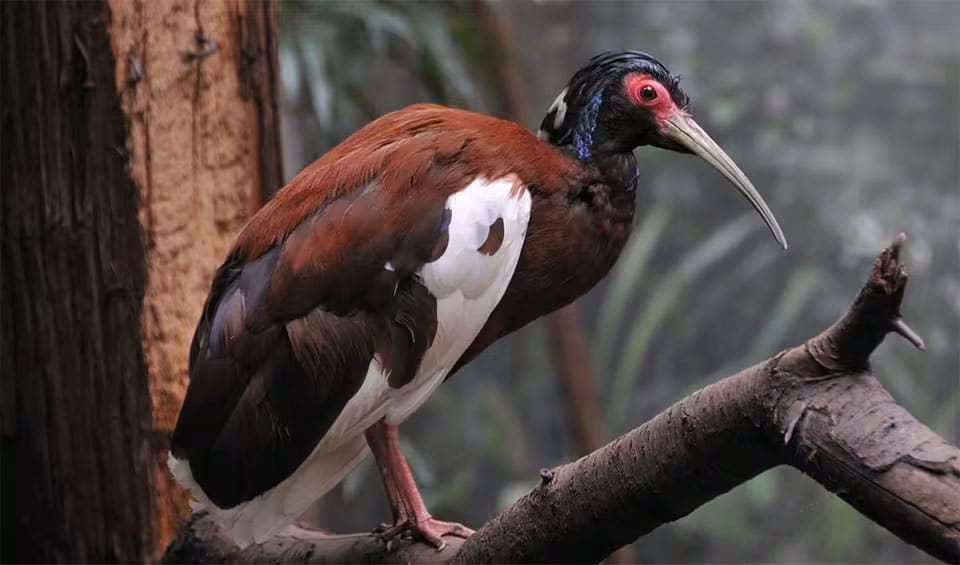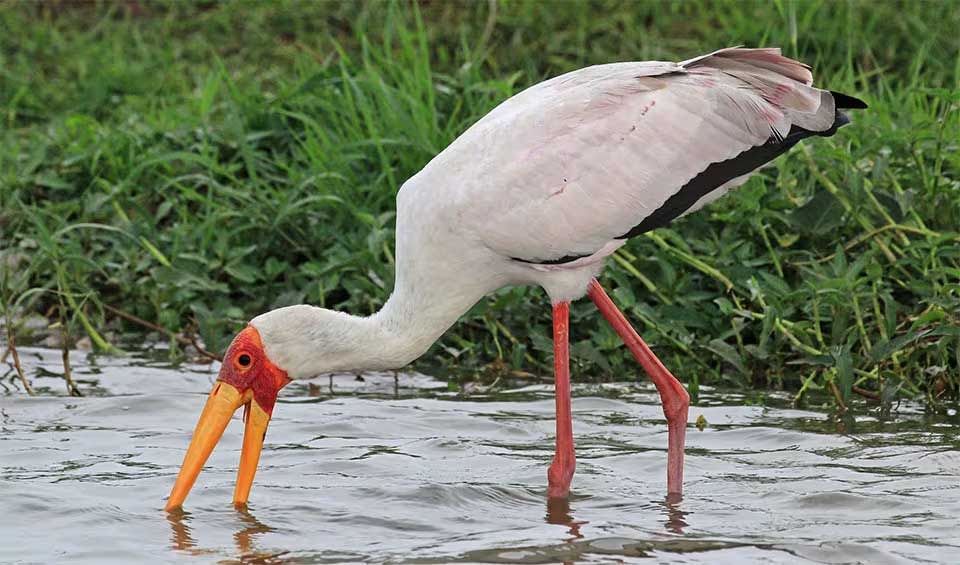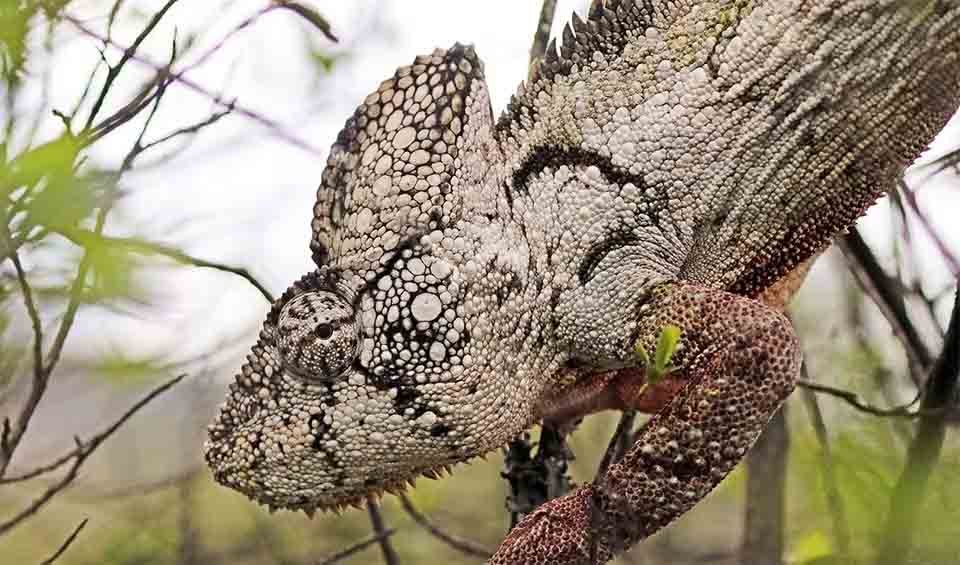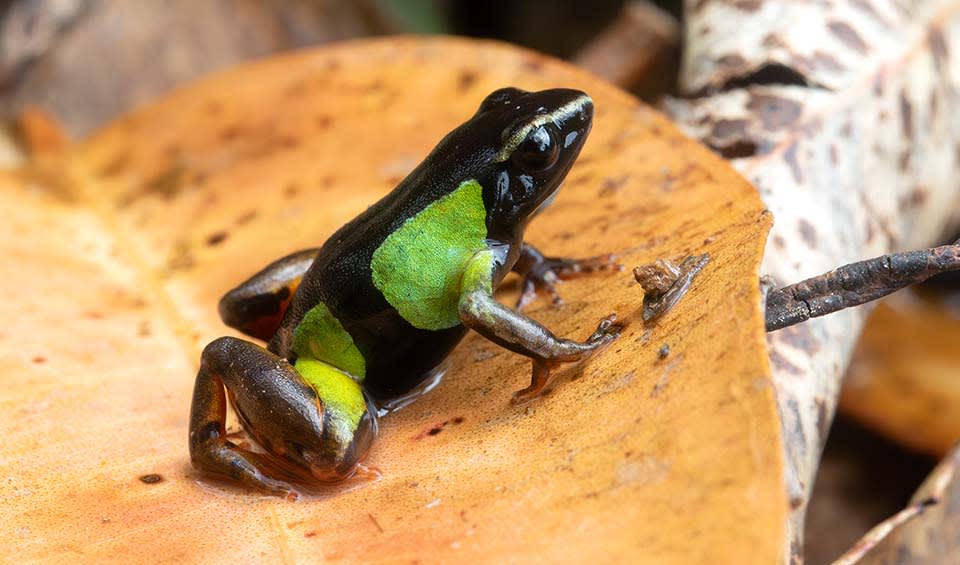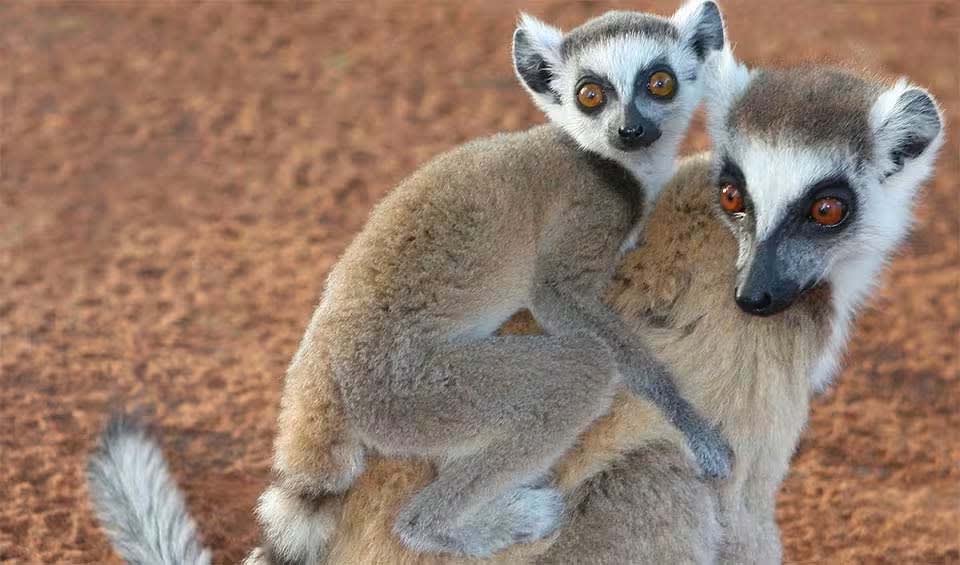The island is home to about 11,516 types of native plants, with an extraordinary 17.9% endemic. Animals like mammals, birds, reptiles, amphibians, and fish (vertebrates) are even more unique, with around 90% of species found only in Madagascar.
It is well-known worldwide for its great diversity of plants, animals, and fungi, many of which are unique to the area, such as rosewood plants and silky sifaka. There’s still a lot we don’t know, especially about fungi and invertebrates.
The country’s landscapes range from forests and wetlands to coral reefs along its coasts, supporting a diverse form of life. It is an endemism country, meaning that habitat loss has an outsized influence on world biodiversity.
It faces widespread deforestation (losing 80% of its forests) and damaged coral reefs. Conservation efforts are crucial, with over 3,000 species needing protection. Its biodiversity also supports its economy through farming, natural resources, and tourism, which is a major income source and vital for sustainable development.
Four pillars elaborated:
Madagascar has allocated 7.49% of its land and 0.91% of its marine territory as protected areas to conserve biodiversity. The coastline extends over 5,000 km (3,107 miles). There are 171 protected areas reported; apart from these, 73 are proposed PAs (May 2021). Forests cover about 19.1% of the country, with 12.5% within protected areas. The island has 7 terrestrial ecoregions, 2 marine ecoregions, and 1 pelagic province, along with 237 Key Biodiversity Areas (KBAs) and 3 Ecologically or Biologically Significant Marine Areas (EBSAs). Land Management
Land Management
Despite these efforts, the country has seen a notable 6.6% decline in forest cover over the past two decades, even within protected areas. The connectivity between terrestrial protected areas is low at 1.9%, indicating limited links between different conservation areas. Yale’s indices indicate moderate efforts to minimize agriculture’s environmental impact. Also, forest landscapes face integrity issues due to human encroachment and loss of connectivity. Challenges like poverty, political instability, and limited resources hinder conservation efforts.
Over 100 lemur species are threatened, with around 40% of Madagascar’s original forest cover gone. This alarming situation is caused by human activities like deforestation for firewood and charcoal production, endangering ecosystems. Threats to Biodiversity
Threats to Biodiversity
Here, a small portion of forest loss can result in extinctions due to the high level of biodiversity and micro-endemism. Red List assessments showed overexploitation and unsustainable agricultural practices affected 62.1% and 56.8% of vertebrate species, respectively, impacting nearly 90% of all plant species.
Another significant concern is hunting and wildlife trafficking, which is made worse by the destruction of crucial habitats. CITES has been ratified, but enforcement is often ineffective. Hunting for bushmeat threatens many species, including the critically endangered and disappearing golden-crowned sifaka.
Invasive species like exotic rats and feral cats cause major threats to endemic species, and invasive plants disrupt ecosystems. Climate change causes coral bleaching, severely impacting the marine ecosystem.
Madagascar has lost 14 species since human settlement, many of which evolved over millions of years. Thousands more are at risk, and replacing them would take millions of years.
The protected areas (PAs) of Madagascar are governed by various agencies. About 1.8% are under the direction of national or federal ministries, and 1.2% are under delegated government. Similarly, 1.2% are under shared governance, and an equal percentage are managed by non-profit organizations. Remarkably, local communities and Indigenous People have significant control over nearly half (47.4% ) of Madagascar’s PAs. Capacity and Governance
Capacity and Governance
Legally, Madagascar’s environmental management is guided by the Malagasy Environment Charter and associated laws, which aim to sustainably manage natural resources and protect marine environments. Environmental Impact Assessments (EIAs) are required for projects to evaluate their environmental impact, while Decree No. 2010/137 promotes sustainable planning in coastal and marine zones through community involvement. Act No. 2015-005 updates the Protected Areas Management Code (COAP) to involve non-governmental organizations in PA management.
The National Office for the Environment runs the Clearing House Mechanism (CHM) for transparent biodiversity information, while the Environmental Units Platform coordinates authorities for integrated environmental management, focusing on both capacity building and governance efforts.
As per the objectives of the National Biodiversity Policy, Madagascar wants to protect its plants and animals and promote sustainable growth. Also, to manage their land, oceans, and coasts more effectively to prevent the loss of biodiversity and poverty. The main goals are to protect their unique natural heritage and save endangered species. Along with supporting scientific research and ensuring that natural resources are distributed equitably, they are also raising public and youth awareness of biodiversity. Adopting political and legal tools for effective implementation and establishing sustainable funding sources is a major component of Madagascar’s future biodiversity conservation initiatives. Future Trends
Future Trends
Expanding biodiversity monitoring and improving already existing protected areas is important for protecting natural resources. Fighting corruption and environmental crimes seems crucial to stop the illegal trade in rare and valuable timber as well as endangered animals, which frequently ends up in Chinese and other markets. To stop the loss of biodiversity, it is also essential to deal with underlying issues like food insecurity, fuel wood crisis and poverty.
Biodiversity
Madagascar, an island nation located off the southeastern coast of Africa, is renowned for its extraordinary biodiversity and high level of endemism. Approximately 90% of its wildlife is found nowhere else on Earth, making it one of the world’s most important biodiversity hotspots. This unique biodiversity results from the island’s isolation for about 88 million years, allowing species to evolve independently.The eastern rainforests of Madagascar are among the most biologically rich areas on the island. These forests are home to many of the island’s endemic species. For example, nearly all of Madagascar’s 100+ species of lemurs, the island’s most iconic animals, are found in these rainforests. The rainforests also host a variety of chameleons, geckos, and over half of the world’s chameleon species, including the smallest known species, Brookesia micra.
Madagascar’s coastal ecosystems, including mangroves and coral reefs, are equally important for biodiversity. The mangrove forests provide crucial habitat for various fish, bird species, and invertebrates. Madagascar’s coral reefs, among the most diverse in the Indian Ocean, support over 6,000 species of marine life, including 250 species of reef-building corals and numerous fish species, many of which are endemic.
In the table below are the number of known species in several main groups, how many of these species are Threatened with extinction, and how many of them are Endemic (unique to Madagascar only):
| Species (World rank) |
Threatened | % Threatened | Endemic | % Endemic | |
|---|---|---|---|---|---|
| Mammals | 257 (#39) | 121 | 47.1% | 217 | 84.4% |
| Birds | 248 (#153) | 37 | 14.9% | 117 | 47.2% |
| Reptiles | 455 (#17) | 139 | 30.5% | 375 | 82.4% |
| Amphibians | 412 (#9) | 145 | 35.2% | 310 | 75.2% |
| Fishes | 1,204 (#28) | 107 | 8.9% | 84 | 7.0% |
| Plants | 12,136 (#23) | 1,111 | 9.2% | 2,173 | 17.9% |
mammals
Fossa
Endemic to Madagascar and its apex predator
Aye Aye
Thought to be extinct in 1933, it was rediscovered in 1957
Indri
Has a laryngeal air sac, which allows them to sing loud, distinctive songs that can be heard from 2 km (1.2 miles) away
birds
Madagascar ibis
The only ibis species that is endemic to the island of Madagascar
Madagascar pygmy kingfisher
Its subspecies “dilutus” is rare and likely near extinction
Yellow-billed stork
As the name suggests, this whitish stork has a bright red face and a distinctively long yellow bill
reptiles
Radiated tortoise
A Critically Endangered “rockstar” tortoise native to the land of Madagascar
Malagasy giant chameleon
A giant chameleon native to the lands of Madagascar
Nile crocodile
One of the most iconic animals of Africa and the second largest reptile on earth
amphibians
Madagascan mantella
Beautiful but toxic—not to humans though
Madagascar tomato frog
Agricultural practices & charcoal production pose threats to these large red Madagascar natives
Malagasy rainbow frog
One of Madagascar’s most striking and colorful amphibians
National Animals
Ring-tailed lemur
Highly recognizable lemur due to its black and white ringed tail
Madagascar fish eagle
A ‘Critically Endangered’ expert fish hunter of Madagascar



